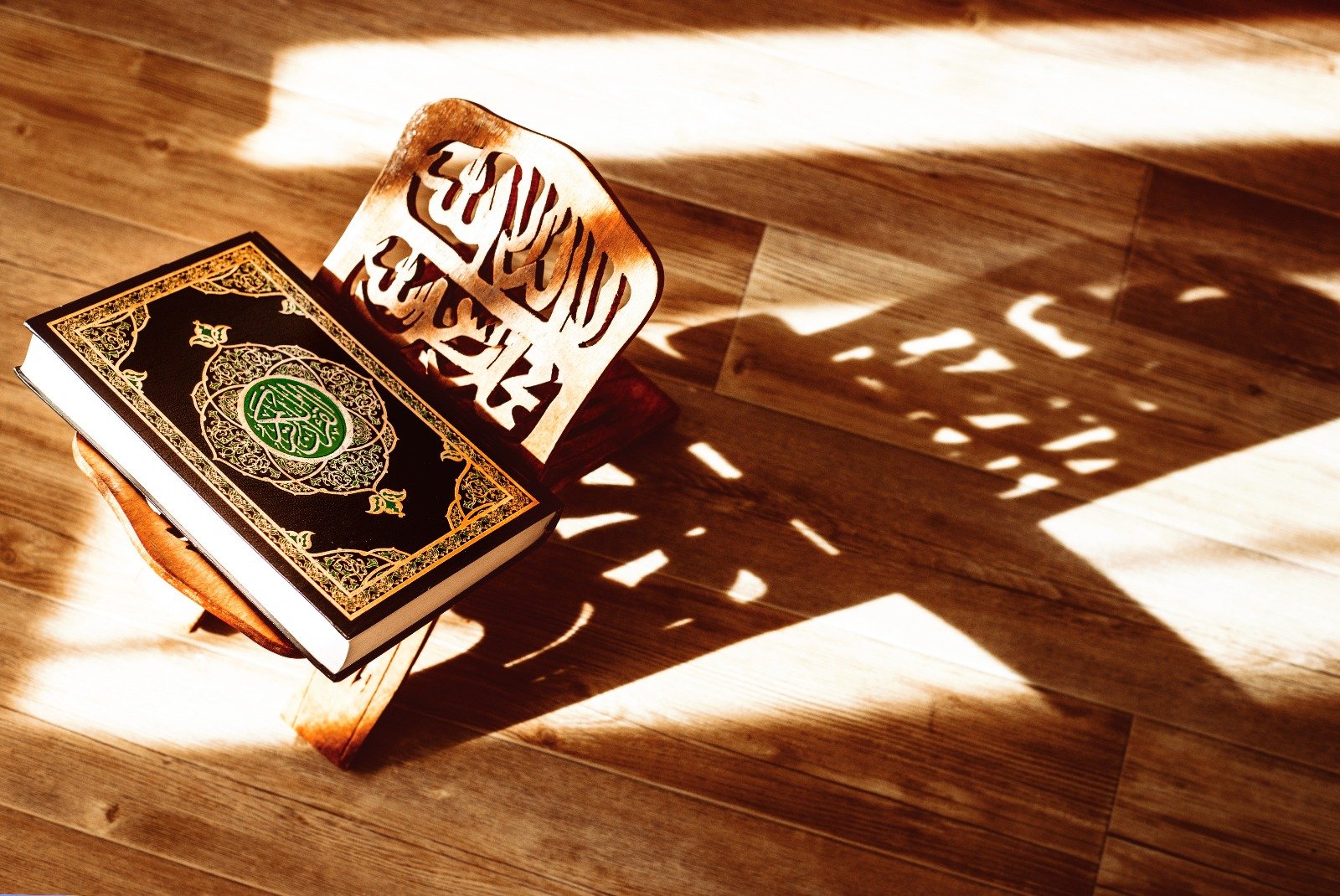Tajweed is simply the art and mastery of reciting the Quran as it was recited by the Prophet Muhammad (peace be upon him). It is the science that guides us on how to pronounce the Arabic letters in the Quran correctly, taking into account their points of articulation, characteristics, and movements, so that the sound comes out in a manner that is suitable for the purposes of recitation. What is a Tajweed Quran? It is a Quran that is printed with the correct Tajweed signs, helping learners to master the art of Quranic recitation.
What is a tajweed quran?

What is a Tajweed Quran? It is a special type of Quran that has been printed with additional markings above the letters and words. These markings, known as Tajweed signs, indicate the specific rules of recitation that should be applied when reading each verse. For example, they might show whether a letter should be lengthened or shortened, or how certain sounds should be combined. As a result, the Tajweed Quran serves as a comprehensive guide for both beginners and advanced learners.
It helps beginners to understand the rules of Tajweed and apply them correctly, while advanced learners can use it to verify the accuracy of their recitation and ensure that they are following the rules of Tajweed. So, what is a Tajweed Quran? It is simply a learning tool that helps Muslims to recite the Quran as it was revealed, adhering to its rules and regulations, thereby adding spiritual beauty to their recitation and increasing their devotion and closeness to Allah
Read about: Online tajweed classes for sisters
Advanced Quran Tajweed Techniques

In recent years, new methods for learning Quran Tajweed have emerged, making the recitation rules easier to grasp for students. One major development is the use of online platforms that offer interactive lessons. These platforms often include audio recordings from skilled reciters, allowing learners to hear and imitate correct pronunciation. This helps them understand the details of Tajweed rules like the proper places to articulate sounds (Makhraj) and the various types of elongation (Madd).
Mobile applications have also changed the landscape of Tajweed education, Many apps use engaging features that turn learning into a fun experience. Users can earn points and rewards for completing lessons or mastering specific rules, which encourages consistent practice and reinforces understanding.
Personalized learning through online tutoring has become increasingly popular. With video conferencing tools, students can connect with qualified Tajweed instructors from anywhere in the world. This individualized approach allows for immediate feedback, helping learners refine their recitation skills with tailored guidance.
Visual aids are another effective tool in teaching Tajweed, Infographics and videos can illustrate the rules, catering to different learning styles. Additionally, using Quranic texts with color-coded Tajweed rules enables students to recognize and apply these guidelines as they read.
Community-focused initiatives, such as study groups or online forums, create collaborative spaces where learners can share experiences and support each other. These environments enhance the overall educational journey and foster motivation.
Overall, the combination of technology, personalized instruction, visual resources, and community support is transforming the way Quran Tajweed is taught, making it more effective and accessible to a wider audience.
Read about: Learn and Master Ikhfa Shafawi: Join the Best Online Quran with tajweed Academy
Mastering Izhar Halqi: Unlocking the Beauty of Clear Quranic Pronunciation
Can you recite quran without tajweed?
Reciting the Quran is a beautiful act of worship, but what happens if we read without Tajweed? Tajweed helps us pronounce each letter correctly, giving life to the words. Without it, the recitation may lose its beauty and rhythm. Imagine reading a poem without paying attention to its flow; the meaning might not shine through as clearly. When we skip Tajweed, we may also change the meaning of some words, which is important because every word in the Quran carries deep significance.
That said, everyone has their own journey with the Quran, Many people start learning to recite before mastering Tajweed, In the beginning, just focusing on reading the words can bring joy and comfort. As we practice, we can slowly incorporate Tajweed rules. This way, each recitation becomes more rewarding.
The key is to maintain a sincere heart, as the Quran is not just about correct pronunciation; it’s also about connection and understanding. Whether you read with or without Tajweed, what matters most is your intention and desire to get closer to the message. With time and practice, anyone can learn the art of Tajweed, making their recitation even more beautiful. In this journey, patience and perseverance are essential, ensuring that the love for the Quran continues to grow.
Read about: Learn Quran Recitation with Tajweed Step-by-Step
How many types of tajweed are there?

The rules of Tajweed are diverse and numerous, They include the rules of the silent noon and tanwin, the rules of the silent meem, the rules of the rarefaction and emphasis, the rules of the madd, and the rules of seeking refuge and basmalah, in addition to other detailed rules that branch out from these main rules.
Makhraj (Articulation Points):
Makhraj refers to the exact point of pronunciation for each Arabic letter, Understanding the Makhraj is essential, as it ensures that letters are enunciated distinctly. For example, some letters are pronounced from the throat, while others come from the lips or the tongue. Mastering these points helps prevent mispronunciation and maintains the integrity of the Quranic words.
Sifaat (Characteristics):
Sifaat describes the inherent qualities of each letter, such as whether they are heavy (مضخمة) or light (مركّقة). These characteristics affect how sounds blend together in recitation. Learning the Sifaat allows reciters to sound natural and fluid, as it guides them on how to emphasize or soften letters based on their properties, Mastering Sifaat contributes to a more harmonious recitation.
Idgham (Merging):
Idgham rules dictate how certain letters should be combined in recitation. When two specific letters appear in succession, one may become absorbed into the other. This merging results in smoother transitions between sounds, enhancing the flow of recitation. There are specific conditions under which Idgham occurs, so reciters must learn these rules to apply them correctly.
Qalqalah (Echoing):
Qalqalah involves producing a slight echoing sound when pronouncing specific letters (ق, ط, ب, ج, د). This technique adds a unique rhythm and emphasis to recitation. Proper use of Qalqalah can enhance the listener’s experience, making the recitation more engaging. Practicing this sound helps reciters establish a captivating and memorable flow.
Madd (Elongation):
Madd refers to the elongation of certain Quranic sounds, which can vary in length, There are different types of Madd, each with unique rules on when and how to apply them. Elongating these sounds enriches the recitation and allows for a greater expression of emotion. Mastering Madd is vital for achieving an authentic and beautiful recitation.
Ghunnah (Nasal Sound):
Ghunnah is a nasal sound that occurs with specific letters, adding depth and resonance to the recitation, This sound involves a subtle humming which enriches the vocal expression. Learning to incorporate Ghunnah helps reciters convey more emotion, enhancing the spiritual experience of listening to Quranic recitation. It is an important aspect of Tajweed that should not be overlooked.
Conclusion
Understanding what is a tajweed quran is essential for anyone interested in deepening their connection with the Quran, By adhering to its rules and principles, reciters can enhance their pronunciations and spiritual experiences. Embracing the Tajweed Quran allows individuals to appreciate the beauty and depth of this sacred text.
FAQS
Why is Tajweed so hard?
Tajweed can be challenging due to its intricate rules and pronunciation guidelines, particularly when learning what is a tajweed quran It requires precise articulation of Arabic letters and sounds. Mastering these rules often demands substantial practice and dedication.
Why read Quran with Tajweed?
Reading the Quran with Tajweed helps to fully appreciate what is a Tajweed Quran’s significance, enhancing the beauty and clarity of the recitation. It conveys the intended meanings more accurately and fosters a deeper spiritual connection with the text.
How many types of Tajweed are there?
There are several types of Tajweed, which are essential for understanding what is a tajweed quran These can be primarily classified into theoretical and practical Tajweed. Theoretical Tajweed involves understanding the rules, while practical Tajweed focuses on applying them in recitation.
Why Is the Tajweed Quran So Popular?
The Tajweed Quran is popular because it serves as a valuable learning tool for both beginners and advanced readers, illustrating clearly what is a tajweed quran
It helps ensure that reciters adhere to the correct pronunciation and rules, enriching their spiritual journey.
What is a Tajweed Quran?
A Tajweed Quran is a version of the Quran that includes markings and annotations to guide readers in proper pronunciation and recitation, Understanding what is a Tajweed Quran is crucial for those wanting to enhance their reading experience. This aids in clearer and more accurate readings.
What are the rules of Tajweed?
The rules of Tajweed include proper pronunciation of letters and observing ikhfaa, idghaam, and ghunnah. These rules are vital to fully grasp what is a Tajweed Quran. They cover the length of vowels and articulation points of letters, ensuring correct recitation.
Where Does the Tajweed Quran Come From?
The Tajweed Quran evolved from traditional methods of reciting the Quran, highlighting what is a Tajweed Quran’s historical context, Scholars developed Tajweed rules over centuries to preserve the correct pronunciation, drawing from teachings that emphasize proper recitation.
Is the Tajweed Quran Right for You?
The Tajweed Quran can be beneficial for anyone looking to improve their Quran recitation, making it clear what is a Tajweed Quran. It is suitable for learners of all ages, especially those who desire a deeper understanding of the text. If you aim to enhance your reading skills, this version is an excellent choice.
Read about:
the best Online Quran classes for adults: Book free trial